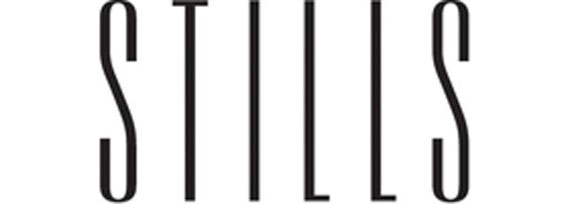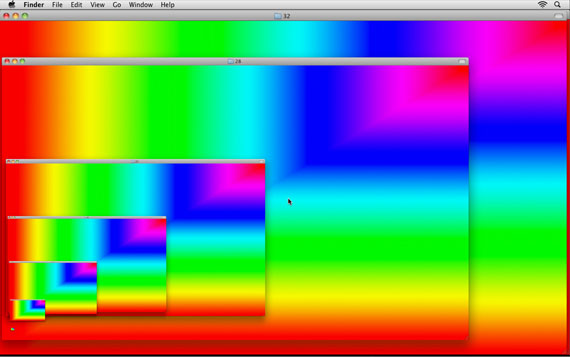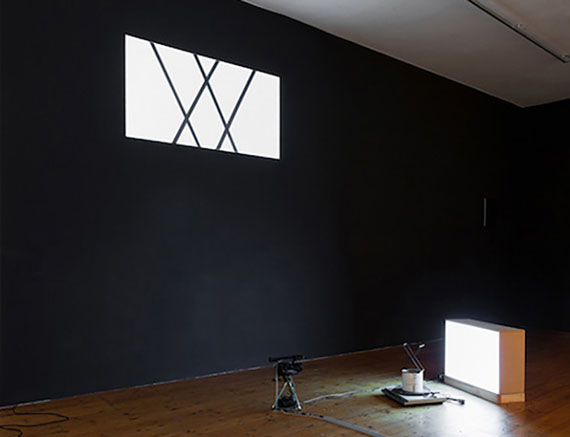
KALEIDORAMA
Danica Chappell » Emilio Gomariz » Biljana Jancic » Taree Mackenzie » Justine Varga » Emma White »
Exhibition: 10 Jun – 18 Jul 2015

Stills Gallery
36 Gosbell Street . Paddington
NSW 2021 Sydney
+61 2-93317775
info@stillsgallery.com.au
www.stillsgallery.com.au
Wed-Sat 11-17

KALEIDORAMA
13 June – 18 July 2015
Danica Chappell (VIC) Emilio Gomariz (SPAIN) Biljana Jancic (NSW) Taree Mackenzie (VIC) Justine Varga (NSW) Emma White (ACT)
Like stepping inside a kid’s kaleidoscope, Kaleidorama is a spectacle of experiments with colour. Filled with an evolving ensemble of artworks and practices, and embracing a similar spirit of investigation and fun, Stills Gallery becomes a kaleidoscopic play of colours and forms. From darkroom experiments to digital aesthetics, the scientific and serendipitous, the old and now, combine, overlay and interplay. Here, like a primary-school lesson in colour theory, the gallery is a lab for messy aesthetics and conceptual overlays: a space for the inquisitive imagination, and mischievous testing of the tried and true.
Taking us into the terrain of digital aesthetics is a selection from Emilio Gomariz’s internationally acclaimed Macintosh Lab series. Using screen video capture, Gomariz records his desktop as he performs artful manipulations with standard Macintosh operating systems and software. Inspiration is found in what others would consider limitations; automated animations, numeric colours and generic graphics. His newly created videos for Kaleidorama, like Opening Folders (2015), for instance, we watch as his cursor fleets across the screen, transforming desktop folders into dancing geometric patterns in rainbow colours. Elsewhere, projected large-scale, it’s the viewer’s hand that takes centre stage in www.maadonna.com, an interactive webpage created by Gomariz and Kim Asendorf that has featured in international exhibitions, including in Eyebeam, New York. Like an illogical, interactive kaleidoscope, streams of tiny graphic icons burst out from the moving cursor—multi-coloured squares, or, changed with a click, fried eggs, flashing computers and psychedelic mushrooms.
Biljana Jancic’s site-specific installation, on the other hand, uses a single shade of blue to enhance a shift in our shared reality. Playfully reflecting, and, at the same time, disrupting, the architecture of the gallery, she reconfigures inside it the heavy drainpipe tubing that normally skirts along the outsides of buildings then paints the tubing with the matt blue colour used in ‘Blue Screen’ technology, a special effects technique that allows blue elements, like backdrops, to be easily removed and replaced with any alternative we might desire. The understated significance of this colour in Jancic’s installation is poignant. It speaks to the often imperceptible ways that digital technologies pervade our lives—not just through our online connectivity—but by informing our material reality, including, as Jancic highlights, the architecture we encounter everyday. Walking under and around these blue pipes, we might imagine ourselves immersed within a future digital-spatial reality, one that more visibly blurs these boundaries. �

OPENING Saturday 13 June, 3-5pm
ARTIST TALKS
Danica Chappell and Emma White Saturday 13 June, 2:30pm
Biljana Jancic and Justine Varga Saturday 27 June, 2:30pm
A sense of physical disorientation from seeing the everyday in enhanced colour is also evoked in Justine Varga’s new photographic prints. Offering a taster for her extraordinary series to come, Varga has produced improbably vibrant colours and exquisitely layered patterns from interventions inside her analogue camera and on the exposed surface of negative film. Deep pinks, velvety oranges and vivid yellows appear quite distinct from her previous, primarily muted tonal palette. But while these prints elicit the emotional depths of colour, they also continue Varga’s investigations into the material surface of photographic film; testing its expansive capacity to record performative gestures, private spaces and personal experiences of time.
With a knack for DIY robotics and a personal curiosity for the mechanics of perception, Taree Mackenzie creates live feed installations and screen-based works that also tease our senses of space, light and colour. What begin as resourceful studio experiments spill over into the gallery, where her improvised approach to scientific enquiry and refined eye for minimalist composition both appear within her works. On the floor in Kaleidorama, for instance, a repurposed DJ turntable spins a simple wooden structure, while a handy-cam records it and live feeds the image, via a projector, onto an adjacent wall. The work’s title, Black Line Formation (2013), cleverly refers to the moving geometric formation of intersecting black lines in the projected video as well as the makeshift mechanics that form it. Miles apart in apparent sophistication, the ‘making of’ and the ‘finished piece’ are here shown side by side.
Illusions appear as abstract expressionist works by Emma White. White’s large and lively painterly images are actually blown-up photographs of small-scale polymer objects. By hand mixing colours together and then processing them repeatedly through a hand-operated press, White found the material softens, blends and seemingly drips like paint. This effect, when enlarged into prints, evokes the thickly layered surfaces and messy aesthetics by the likes of Jackson Pollock, who spearheaded an expressive style that embraced gestural brushstrokes and spontaneous actions with paint. Inspired by accidental splashes of paint around the Matisse Derivan paint factory in Western Sydney, this new work continues White’s interest in the tension between the handmade and industrially produced.
While White moulds and manipulates the slippery line between material and image, Danica Chappell uses tintypes, one the oldest forms of photography, to test the entanglement of process and light sensitive materials. Describing her work in Kaleidorama as blending photography “with a desire to paint and construct forms”, her image records layers of scrap papers and odd materials that she applies directly to the tintype’s metallic ‘wet plate’. Feeling her way around the pitch-black darkroom to blindly create these abstract compositions is an activity she calls “darkroom haptic”: a form of photography that, in the first instance, preferences touch over vision. Chappell’s works, therefore, don't just record the shapes and lines of found detritus, but also her unseen performance, which remains only in shadows, textures and traces. Chappell likens her time in the darkroom to “crawling inside the camera”, suggesting that, through physical immersion in the process, her presence is as tangible as photographic light sensitivity.
Offering a mash-up of methodologies and aesthetics, Kaleidorama playfully probes new possibilities in colour. With the extensive history of experimentation in the sciences and arts, you would think there couldn't possibly be any further territory to explore, anything more we can experience. But these artists adeptly, aesthetically, prove otherwise.�
